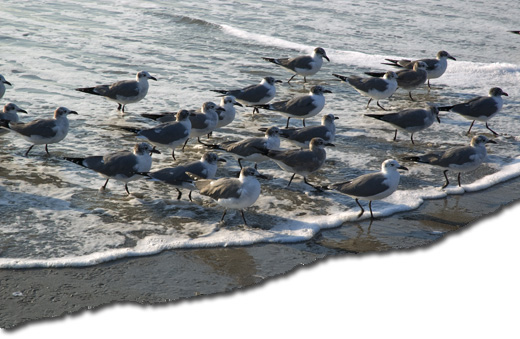It was a sense of inevitability that I read about the lawsuit against Creative Commons and Virgin Mobile, Australia. The suit came about because of the recent Virgin Mobile use of photos licensed for commercial use via a CC license.
Not surprising to read Lawrence Lessig’s optimistic look at the issue, though his segue going from a thoughtful look at where things went wrong to “everything worked as planned” is a rather interesting read:
this case does again highlight the free culture function of the Noncommercial term in the CC license. Many from the free software community would prefer culture be licensed as freely as free software — enabling both commercial and noncommercial use, subject (at least sometimes) to a copyleft requirement. My view is that if authors so choose, then more power to them.
But this case shows something about why that objective is not as simple as it seems. I doubt that any court would find the photographer in this case had violated any right of privacy merely by posting a photograph like this on Flickr. Nor would any court, in my view, find a noncommercial use of a photograph like this violative of any right of privacy. And finally, as the world is just now, while many might resist the idea of Virgin using a photograph of theirs for free (and thus not select a license that explicitly authorizes “commercial use”), most in the net community would be perfectly fine with noncommercial use of a photograph by others within the net community.
The Noncommercial license tries to match these expectations. It tries to authorize sharing and reuse — not within a commercial economy, but within a sharing economy. It tries to do so in a way that wouldn’t trigger at least most non-copyright rights (though again, most is not all — a CC BY-NC licensed photograph by a voyeur still violates rights of privacy, for example). And it tries to do so in a way that protects the copyright owner against presumptions about the waiver of his rights suggested by posting a work freely.
I began to write on my concerns about Creative Commons, as soon as they were released. Years ago, in response to a comment by Sam Ruby, I wrote about the potential problems for confusion associated with the CC licenses:
Sam, in the legal world there is no ‘seed’ planting. There is clarification or confusion.
Not all forward motion is positive. I’d rather see people hesitate on using the CCL, and the CC open a dialog with the community (through a weblog with comments or a discussion group or like), then to continue using the CCL, perhaps incorrectly, all based on wonderful sounding words and a cute movie.
I appreciate the nobility of the Creative Commons intent and effort. But I’d appreciate it more if they combined that with an interactive element that allows us all to understand better what it all means.
I guess we have a better idea of what it all means now. But I wrote that over five years ago.
In response to this issue, Suw Charman wrote:
I like to think that the world is based on goodwill. People are, generally speaking, nice and, by default, they will respect and help others. Certainly humans are fundamentally and inescapably social creatures that need each other on a minute-by-minute and day-to-day basis, and I think that being nice is one of the attributes that which fuels the reciprocation that makes helping someone else ultimately worth it for us ourselves.
I also think that the social web is an expression of the niceness that lubricates society. All the mores that have built up around blogging and wikis and sharing and Creative Commons are based on being nice: if you quote someone’s blog, it’s being nice to credit them; Wikipedia encourages everyone to be nice to newbies; sharing anything with strangers is an act of niceness in itself; and Creative Commons licences are predicated on the idea that people will be nice and respect them.
Whilst niceness isn’t universal – there are people who aren’t nice – it is a desirable attribute, so much so that niceness is taught and enforced from birth. I doubt there’s anyone reading this who wasn’t told as a child to “be nice” or to “play nicely”. Nice is good. We need nice.
This might explain why I get so cross when I come across examples of people, or especially businesses, not playing nice. But thanks to the internet, we now get to call out companies who, whilst sticking to the letter of the law (or Creative Commons licence), are flagrantly abusing its spirit.
The online world–Suw’s ‘social web’–is no different than the offline world: there are people who give all, and people who take all, and the rest of us in the middle just trying to get by. The online world–with its Creative Commons, Wikipedia, Citizen Journalism, Social Network/Web/Graph goodness–is no more ‘nice’ than the towns, cities, or hamlets we live in; it’s just newer is all and we don’t have to worry about landfill. Continuing to set any of this up on a pedestal only serves to generate a false sense of trust and security that inevitably leads to disillusionment.
In the post associated with the comment I quoted earlier, I wrote (with some modifications to grammar):
Pessimists see the world from its dark side—always the glass half empty. They never see that the world can be made better, or that problems can be solved. They’re not constructive, but they aren’t destructive, either.
Idealists, on the other hand, only see the light. In their world, the sun always shines (except for that bit of rain needed for the trees), the birds always sing, and humanity exists in harmony. They are pleasant, but they can also be destructive.
The idealist is destructive where the pessimist isn’t by introducing change without concern for the consequences. They say, “Look at this wonderful thing I have given you!”, but don’t provide the user manual. After you’ve managed to blow up a city block, when you look for the idealist they’ve moved on to another part of the world, to drop yet another idealism bomb on some unsuspecting poor sod.
Idealists. You gotta love em, because if you didn’t you’d want to strangle them.
Where this is all leading is the release this week of the Creative Commons licenses: those digital goodies that one can attach to our creative efforts to let others know if they can use these efforts in defined ways. Collaboration and community, 101. Like our idealist, the Creative Commons have dropped this little bomb in our lap and then left it up to us to determine how to use these things, and what they really mean.
Jonathon Delacour, who has been called, usually with respect and affection, many things but I don’t think ‘nice’ was one of them, shared some of my misgivings about the CC licenses. He wrote:
Picasso and Braque stood on each other’s shoulders as they invented Cubism but they were careful (and sufficiently smart) to maintain the copyright on their works. The Creative Commons Licenses, on the other hand, typify Thomas Sowell’s unconstrained vision of human nature by relying on people (“I’ve never met”) to behave honorably and to respect the integrity of my work. Spend five minutes on “this Internet” and tell me I’m not bound for disappointment.
I wouldn’t be so skeptical if the Creative Commons Licenses relied less on a rose-tinted vision of benign collaboration and instead provided greater safeguards for the real interests of those licensing their original works; or if, to borrow Thomas Sowell’s words, they replaced—to at least some degree—their “moral vision of human intentions” with a more pragmatic acceptance of the “inherent moral and intellectual limitations of human beings.”
In other words—and pardon my bluntness—what’s in it for me? Really? Other than distress and disillusionment?
It is this determination to manufacture an online Utopia, to hold fast to the rose-tinted vision that Jonathon described, of the Creative Commons–promoted by shrewd, sharp people who should have known better–that spurred me to write my criticisms years ago, and to continue to write on topic in the times since.
The Creative Commons web site has never, to my knowledge, responded to challenges, or discussion regarding the issues surrouding the licenses. When I derived a test of CC licenses, or when Creative Commons figured in a Dutch law suit, or Virgin Mobile grabbed several CC licensed photos from Flickr for its campaign, the Creative Commons community seemed to focus more on eliminating anything other than the type of license that caused the initial problems, rather than respond to the issues, or reflect on perhaps providing stronger warnings.
Ultimately, who really does benefit from the Creative Commons? Andrew Orlowski, who has never been referred to as ‘nice’ either, as far as I know of, wrote one of the most eye opening summations of the Creative Commons I’ve read:
Few participants who slap a CC license on their work understand that the mechanism was designed to benefit the network, not the humans, by removing “frictions” such as compensation or consent.
Some would say it is not the CC organization’s responsibility to answer the critics, to meet the challenges–that the organization doesn’t have an obligation to warn as much as it promotes. I say to stubbornly persist in wearing those rose-tinted glasses, to mark only the sunny hours, as the sun dial would say, is the ultimate irresponsibility. The Virgin Mobile lawsuit was inevitable, and it didn’t have to be.
It would seem that the online site Babble has been taking photos from Flickr, assuming they’re CC licensed, even when the photos they take are copyrighted by their owners.
No, I don’t blame CC. However, there is a growing assumption that photos at Flickr are CC licensed, and this is causing additional confusion. In addition, a CC licensed photo, even one designated as non-commercial, can be used in a magazine or newspaper, because that’s not necessarily considered ‘commercial’ use of the photo.
Just one of the many uncertainties and confusions around CC licenses, copyright, and fair use. That’s the main reason we shouldn’t be making it easier for people to license their work with CC.




